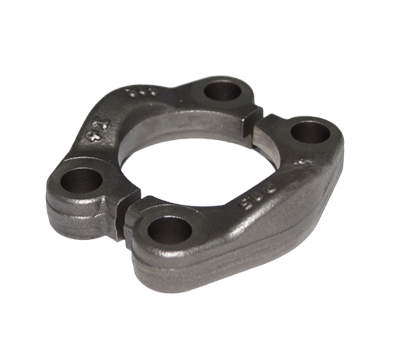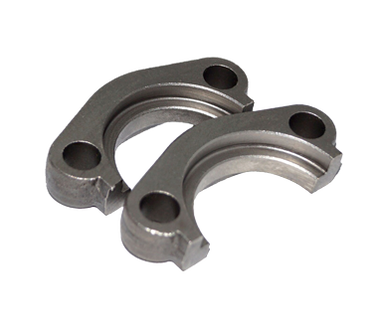|
|
Split flanges are one of the types of SAE Flanges. Flanges are tools to aid the easy connection between hoses, tubes, pipes, and hydraulic systems. They are widely used due to their features enabling connection with hydraulic systems using high pressure, vibration, and shock. A split flange is produced in two designs – 3000 PSI and 6000 PSI. Split flanges are also known as Code 61 Split Flanges and Code 62 Split Flanges. They are designed to conform to the specifications of the SAE J 518 C. The materials for production are mainly carbon and stainless steel. |
Material Specification |
|
Series |
|
Size |
|
Type |
|
1. What is a Flange?
|
A flange is a fastening tool designed to connect pipes, tubes, and hoses to the system. Flanges also allow for easy cleaning, maintenance, and replacement of damaged parts of the system. There are two methods of fastening flanges – welding and screwing. Flanges are produced conforming to different standards, and the most common high-pressure standard is the SAE J518 standard. The flanges can be used interchangeably, and however, other designs specify the standard for usage.
Flanges are of various types and they are discussed below:
|
2. What materials are Split Flange made of?
|
Split flanges made mainly form two materials – carbon steel and stainless steel. Carbon steel is a material with carbon content ranging from 0.05% to 2.1%. It has increased tensile strength and is suitable for producing structures, cutting tools, etc. the carbon material types are C20, C45, CQ235, etc.
Stainless steel is an alloy that contains about 11% chromium with other elements such as carbon, nitrogen, silicon, sulfur, selenium, etc. the high chromium content increases the anti-rust property and heat resistance of Stainless Steels. They are available in types 304, 316, 316L, 316Ti. The corresponding DIN steel grade is 1.4301, 14401, 1.4404, and 1.4571. |
For other materials to be used, they can be available when requested. The surface finishing is completed with galvanized yellow zinc, nickel-plated, untreated oxidation, untreated oiled, phosphate, and white zinc coatings.
3. Components of a Split Flange
The complete split flange has these primary elements – O-ring and a flanged head.
O-ring: the O-ring seal, also known as toric or packing joint placed between a groove in a flange for compression. Due to the contact with other parts during the compression, the O-ring requires a seal called an O-ring seal, which is used to prevent leakage during and after installation. Selecting an O-ring is based on more machine demands like temperature, compatibility, size, durometer, etc. CSM, BR, IIR, FKM, NBR, etc are some of the chemicals used for O-ring production.
The connection on the split flange takes place on the O-ring rather than the thread. This makes split flange reusable compared to other kinds of flanges. It is thus also important to carefully select the appropriate O-ring for your connection.
Flange head: The flanged head is a permanent component of the flange. It is connected to the tube through brazing or welding.
A split flange can however come in 2 variants:
O-ring: the O-ring seal, also known as toric or packing joint placed between a groove in a flange for compression. Due to the contact with other parts during the compression, the O-ring requires a seal called an O-ring seal, which is used to prevent leakage during and after installation. Selecting an O-ring is based on more machine demands like temperature, compatibility, size, durometer, etc. CSM, BR, IIR, FKM, NBR, etc are some of the chemicals used for O-ring production.
The connection on the split flange takes place on the O-ring rather than the thread. This makes split flange reusable compared to other kinds of flanges. It is thus also important to carefully select the appropriate O-ring for your connection.
Flange head: The flanged head is a permanent component of the flange. It is connected to the tube through brazing or welding.
A split flange can however come in 2 variants:
- The group uncut split flange
- The double uncut split flange
4. What is a group of Uncut Split Flange?
|
The group uncut split flange is the base design of a split flange with the basic components such as the O-ring, bolt, washer, a flange adapter, and the uncut split flange.
The O-ring ensures that the flange connection is properly sealed. The bolts are screwed to the flange head to provide a sturdy and firm connection at the port. The washers help maintain the load balance and disperse the flange's load across its entire surface. The flange adapter is connected to the uncut split flange, and the two halves of the flange are clamped together using the bolts. An adapter is mostly used alongside captive flanges, which are applied for tube-to-tube or pipe fittings. The captive flanges slide smoothly over the glared tube connection and are then connected to the flange assembly itself. Note that the O-ring must be placed inside the groove on the flange body before the flange is connected to the tube. |
Component |
O.I Code |
Quantity |
Material |
O-ring |
OR... |
1 |
NBR70 |
Bolt |
M...x... |
4 |
CL.8.8 |
Adapter |
SFS...ST |
1 |
A105 |
Uncut Split Flange |
AFSI... |
1 |
ST52.3 |
The table above shows the components and materials of a group uncut split flange.
One thing to note about group adaptors is that the group uncut split flange takes more time to dissemble. Typically, the machine has to stop operation, the pipe or tube removed, the flange adapter removed before the group uncut split flange can be accessed and removed.
5. What is a Double Uncut Split Flange?
The double uncut split flange looks like the group uncut split flange when coupled. The difference between the two is evident before the flange connection is made. The double uncut split flange has two separate split flanges (the threaded split flange and the uncut split flange) and two adapters (an adapter and a counter adapter) compared to the single flange and flange adaptor on the group uncut split flange.
The double uncut split flange is easier to disassemble because the machine does not have to stop operation, or the tube is removed before the split flange can be removed or reinstalled. When reinstalling a split flange, it is good practice to change the O-ring, washer, and clamp halves with new ones.
The double uncut split flange is easier to disassemble because the machine does not have to stop operation, or the tube is removed before the split flange can be removed or reinstalled. When reinstalling a split flange, it is good practice to change the O-ring, washer, and clamp halves with new ones.
|
The table above shows the components and materials of a group uncut split flange.
6. What is the working pressure of Split Flanges?
|
The working pressure of split flanges depends on the flange size and bolts type. However, the 3000 PSI (standard pressure) split flange working pressure ranges between 35 and 350. For the 6000 PSI (high pressure), the working pressure can be ≥ 400 bars.
The Split flange has a lot of advantages over the conventional flange types. Due to its design (two parts), they are used for tasks the other flanges cannot perform. Majorly, the split flange is used to strengthen weak components on the system. Also, it can be used to attach new parts in areas where other flanges can’t work. |
7. How can Split Flanges be properly maintained?
Split flanges are often damaged by some signs neglected or improperly maintained. The factors are:
To avoid these aforementioned factors, maintenance of the flange should be done periodically. If the flange has any of these problems, try re-facing the flange. This will increase its productivity and efficiency greatly.
- Scratches: scratches are caused on surface areas by sharp objects. Depending on the force, the scratch can be deep or narrow. Whichever it is, scratches damage the flange and can lead to leakage of oil.
- Gouges: these are created by rounded bottoms of an object like a screwdriver being dragged on the flange's surface. When this is noticed, the flange must be replaced to avoid the creation of greater havoc.
To avoid these aforementioned factors, maintenance of the flange should be done periodically. If the flange has any of these problems, try re-facing the flange. This will increase its productivity and efficiency greatly.
- Before installing the split flange, you have to check the joints and mating areas thoroughly. Check joints for scratches as this may lead to damage to the flange quickly. Also, these scratches can quickly wear-out O-rings. For the mating surfaces, ensure proper cleaning is done.
- Properly fix the tolerance level for each part to avoid leakages after connections.
- Also, the torque level must be equal on all four bolts fixed on the flange. With this done, the extrusion of the o-ring will be prevented after pressure is applied.
- When tightening bolts, ensure the process is gradual to control pressure. Also, avoid the over-tightening of bolts. To be sure about the tightened bolts, the flange will tip upward. However, when the flange and bolts are bent, the bolts have not been properly tightened. There’s a need to check and re-adjust the bolts to avoid leakages.
SPLIT flanges catalogue










